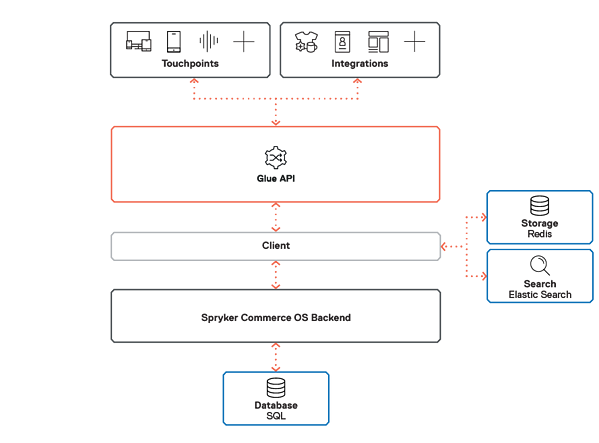Technology
Retailers not Considering these Things in E-Commerce in 2020, will be Offline in 2021
2019 is coming to an end - and like every year, we have prepared our forecast of what will happen in e-commerce next year. What e-commerce trends can be expected and what new topics will revolutionize online trade in B2B and B2C in the long run?

Trend 1: Visual Commerce to make Products more Tangible
Visual Commerce combines technologies such as Augmented Reality, 360° videos and 3D displays. This will become an important element of the customer experience – making it easier for customers to find what they need by viewing images or searching for visual attributes.
According to Gartner, more than 100 million customers worldwide will use Augmented Reality during a purchasing process by 2020. The technology behind it makes it possible to screen products directly onto specific environments. This also gives digital product catalogs a “physical” shopping experience. This trend will increasingly revolutionize the B2C sector in particular. The trend is already on the rise in some industries, such as Ikea’s Place App, which displays furniture in your own four walls, or Sephora’s virtual Visagist, which can display products directly on the buyer’s face.

Trend 2: Voice Commerce still Produces Voice SEO Pioneers and Increasing Understanding of User Emotions
A study by ComsCore predicts that by 2020 more than half of all search queries will take place via voice assistants such as Amazon’s Alexa or Google Home. This will enable B2C retailers in particular to use voice technology for their own purposes. And this is the great opportunity for online retailers: they can expand their online shops with smart applications for voice assistants and make it possible to place orders via voice commands. Medium-sized companies are often reluctant to invest in a language assistant – even a setup for just a few products in 2020 can still create an huge SEO advantage, while it will be almost impossible for latecomers to place their products.
Voice commerce will also play a more important role in the B2B sector: in areas where no computer is available, such as warehouses, voice control can help increase productivity. B2B buyers can also use voice commerce to re-order products in a more convenient way – for example, when they need to reorder products during a car journey.
"The customer journey and requirements have changed. Technologies are evolving, customers are using new devices such as voice assistants. Yesterday's pioneers, who have worked hard and invested a lot of money to develop their skills, have to reconsider."
At the same time, the progress of voice devices that understand emotions and adapt tone and recommendations accordingly brings new opportunities for niche products.
"By 2022, your personal device will know more about your emotional state than your own family."
Trend 3: Artificial Intelligence, Machine Learning and Hyperautomation as Boosters for Production Efficiency and Digital Conversion Levers
Artificial intelligence already has a huge impact on many industries. Systems that are controlled by algorithms simplify data analyses and allow precise conclusions on customer needs- often optimized through machine learning. In the future, more and more online shops will be able to use machine learning and offer customers a very customer-centric shopping experience based on the data collected from past purchases and behavior during the customer journeys. Data-based content and product recommendations can be offered to make the sales experience more relevant for customer. In B2B, artificial intelligence is often used to drive efficiency, especially in production.
In this area, we will see further innovations in 2020 that will make an increasingly personal and personalized shopping experience possible.
An example of artificial intelligence that is often used in B2C environments today is the chatbot, whose technology is based on machine learning. Customers chat with an algorithm instead of a real person – certain questions lead through a pre-defined process and to the desired result, e.g. service requests. Chatbots can also be integrated as messenger bots on Facebook, making them the first touchpoint between customer and retailer.

48% of customers would be more likely to contact the retailer via live chat than via other channels such as email or telephone.
Setting up a simple chatbot is often easier than expected and creates efficiency in customer communication. Medical and safety technology manufacturer Drägerwerk has managed to reduce its response time to customers from an average of 6 days to seconds with a chatbot and can now focus on highly individual questions in customer service.
A term that is still quite new in the e-commerce environment but should not be neglected in the AI context and, according to Gartner, will also become more relevant in 2020: Hyperautomation. This term refers to the use of artificial intelligence and machine learning to automate increasingly complex activities. In the near future, these tools will be used to ensure that companies can rely on AI-controlled decisions, which can make processes faster, more efficient and cheaper in many departments – whether it be the preparation of financial reports in accounting or fully automated marketing mailings.
Trend 4: Enterprise Marketplaces Empower Retailers and Manufacturers to Take Control of their own Markets
Even in B2B, marketplaces are not a completely new business model – nevertheless, retailers seem to be more willing to sell products via a marketplace platform such as Amazon or Ebay than to run their own. This is exactly where the opportunity lies: Early adopters, such as electronic component retailers Sourceability, have the chance to become the market leader in their industry, to build up a large partner network and to outperform Amazon through a more relevant offering: Sourceability’s marketplace can already compete with the giant via its platform the size of Amazon.
Particularly retailers and manufacturers who offer not only a standard range but also niche products, customized products and services have the opportunity to position themselves as pioneers in their industry with their own marketplace. It is a win-win situation for all parties: the merchants have the advantage to launch their own online shop with little effort and to be integrated as a trading partner. In addition, they can use the platform not only to sell products, but also to advertise and boost sales. These advertising cost in turn can mean an additional sales channel for the marketplace operator.
"Online marketplaces benefit from a combination of the 'wholesale effect', i.e. more products, less expensive for customers - including customer access and customer data. This can either be evaluated and used, or sold to retailers and manufacturers."
Trend 5: Subscription Models Create Loyal Customers like no Other Measure
One of the biggest, so far untapped e-commerce opportunities is selling via subscription models. Especially for the B2C sector, including fashion retail, the music industry or streaming services, automatic sales are a real option for calculable revenues; customers appreciate the convenience, cost savings and personalized curation. By 2023, according to Gartner, 75% of companies that sell directly to consumers will offer subscription services to sustainably increase customer loyalty. Again, early adopters will definitely have a chance to stand out from the competition before it’s too late.

Trend 6: API-based, Headless Technologies are the only way to stay ahead of the Competition
A trend that has already become obvious in recent years will become the absolute standard next year: Companies are building modular, headless platforms instead of relying on a single monolithic commerce solution. Why? To improve their flexibility and agility in connecting new touchpoints, business models and ecosystem partners. Only API-based commerce allows companies to decouple the frontend from the backend and quickly integrate new functions or systems. It is also possible to integrate new business models and concepts at short notice – why not one of the above points?

Each company must consider the relevance of above topics for itself, but as we all know: Developments and innovations in e-commerce are launched more quickly than one can say “customer centricity” – and it is crucial to implement tomorrow’s trends today in order not to lose customers to more innovative competitors next year.
And with this food for thought, Spryker wishes you a successful Kick-off 2020!